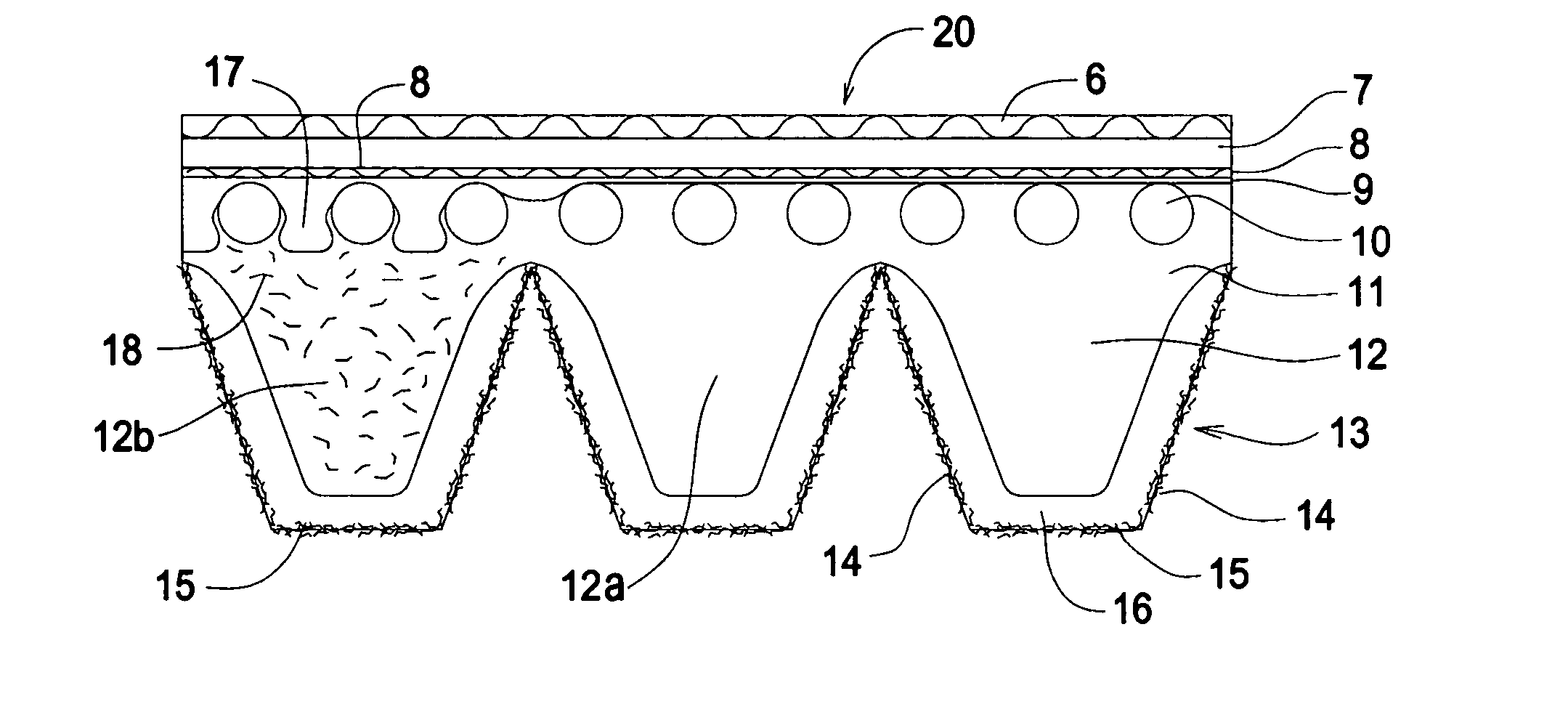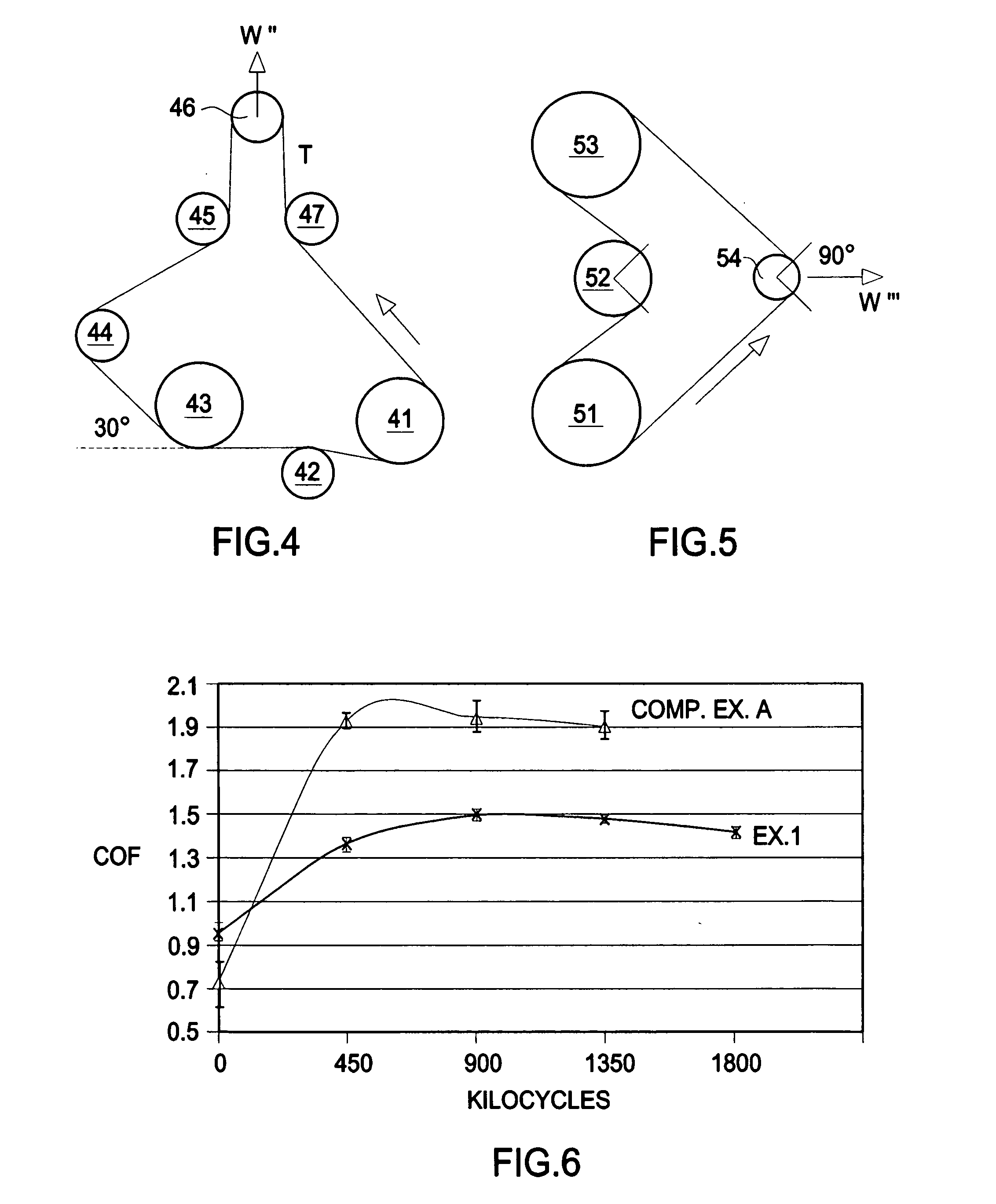Power transmission belt
a transmission belt and engineered surface technology, applied in the direction of driving belts, belts/chains/gearrings, v-belts, etc., can solve the problems of belt noise, rib surface sloughing, slipping, chatter, etc., and achieve the effect of reducing or eliminating slip nois
- Summary
- Abstract
- Description
- Claims
- Application Information
AI Technical Summary
Benefits of technology
Problems solved by technology
Method used
Image
Examples
examples
[0045] Noise, friction and durability tests were conducted on an exemplary belt constructed using the formulae noted previously in Table 1. The inventive belt was compared with prior art belts without a subsurface friction-modified region interpenetrating a nonwoven pulley contact surface. The results indicate that misalignment noise generated by the inventive belt is significantly reduced. The inventive belt is also quieter and exhibits a more stable frictional behavior over time.
[0046] The test belts comprised an overcord 7, cross-cord 8, gum layer 9, tensile cords 10, a compression section or body 11, a subsurface region 16, and a nonwoven region 15 as described in FIG. 1. The test belts were all EPM-based with polyester tensile cords, nylon cross cord, and two layers of nonwoven of 50% softwood and 50% hardwood. The nonwoven had a basis weight of 4.6 g / m2; porosity of 100 CFM per ft2 per ½″ H2O pressure drop; tensile strength in the machine direction 550 g / inch; tensile strengt...
example 1
[0048] The belt Ex. 1 comprised 10.75 PHR (3 volume %) of Zonyl MP1100 powdered PTFE friction modifier in the subsurface elastomeric composition.
example 2
[0049] The belt Ex. 2 comprised 18.3 PHR (5 volume %) of Zonyl MP1100 friction modifier in the subsurface elastomeric composition.
PUM
 Login to View More
Login to View More Abstract
Description
Claims
Application Information
 Login to View More
Login to View More - R&D
- Intellectual Property
- Life Sciences
- Materials
- Tech Scout
- Unparalleled Data Quality
- Higher Quality Content
- 60% Fewer Hallucinations
Browse by: Latest US Patents, China's latest patents, Technical Efficacy Thesaurus, Application Domain, Technology Topic, Popular Technical Reports.
© 2025 PatSnap. All rights reserved.Legal|Privacy policy|Modern Slavery Act Transparency Statement|Sitemap|About US| Contact US: help@patsnap.com



